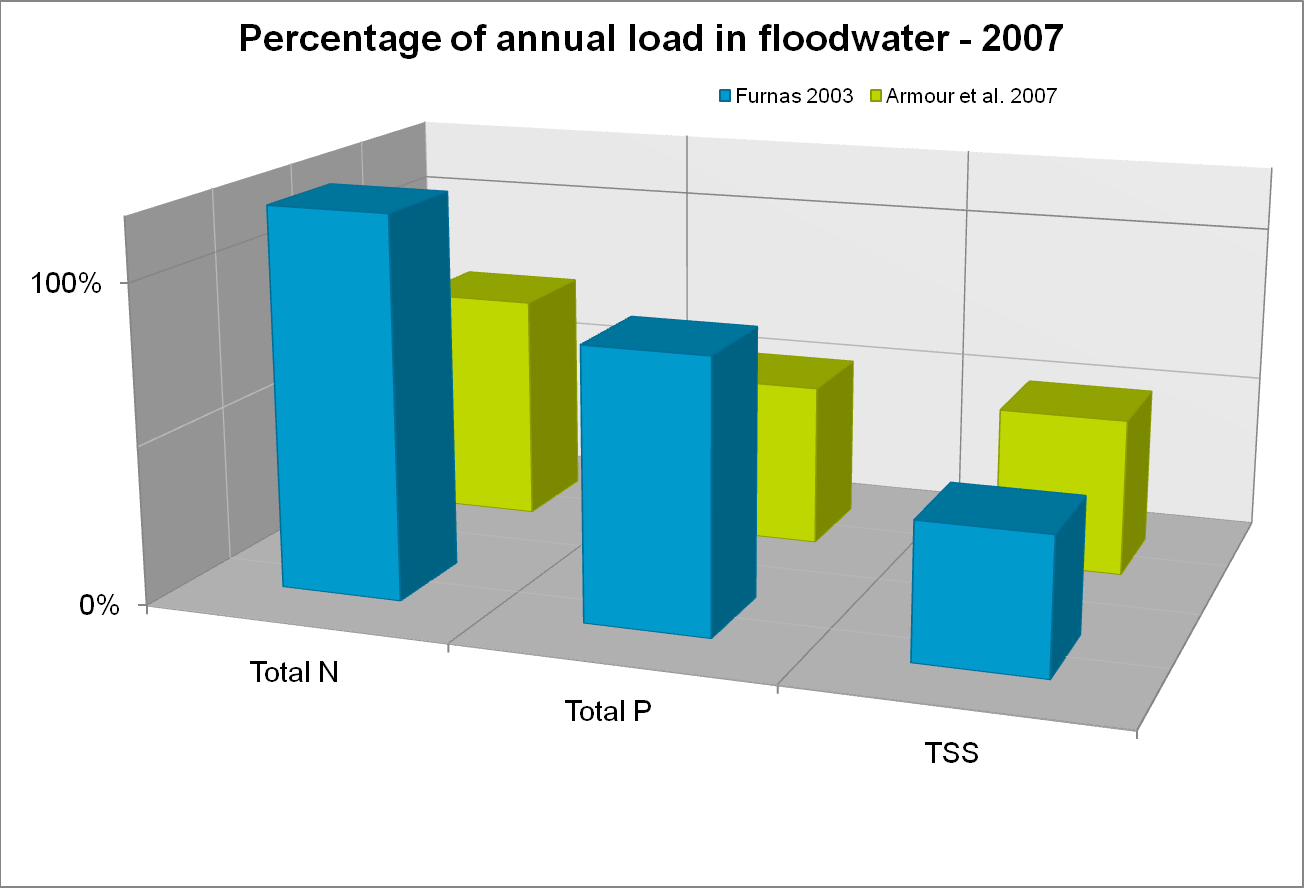|
Results and Conclusions
The systems operated for three years and and collected samples from 13 floods.
An example of the concentration data for nitrogen species at each site is shown in figure 1.
Load estimates developed from these concentration data show that flooding makes a large contribution to the marine load of sediments and nutrients that is not recorded by standard river gauges.
Load estimates based on stream gauges alone under-predict total nutrient export by approximately 50% for nitrogen and 30% for phosphorous (figure 3).
|


